Write Us
We are just a call away
[ LET’S TALK AI ]
X
Discover AI-
Powered Solutions
Get ready to explore cutting-edge AI technologies that can transform your workflow!

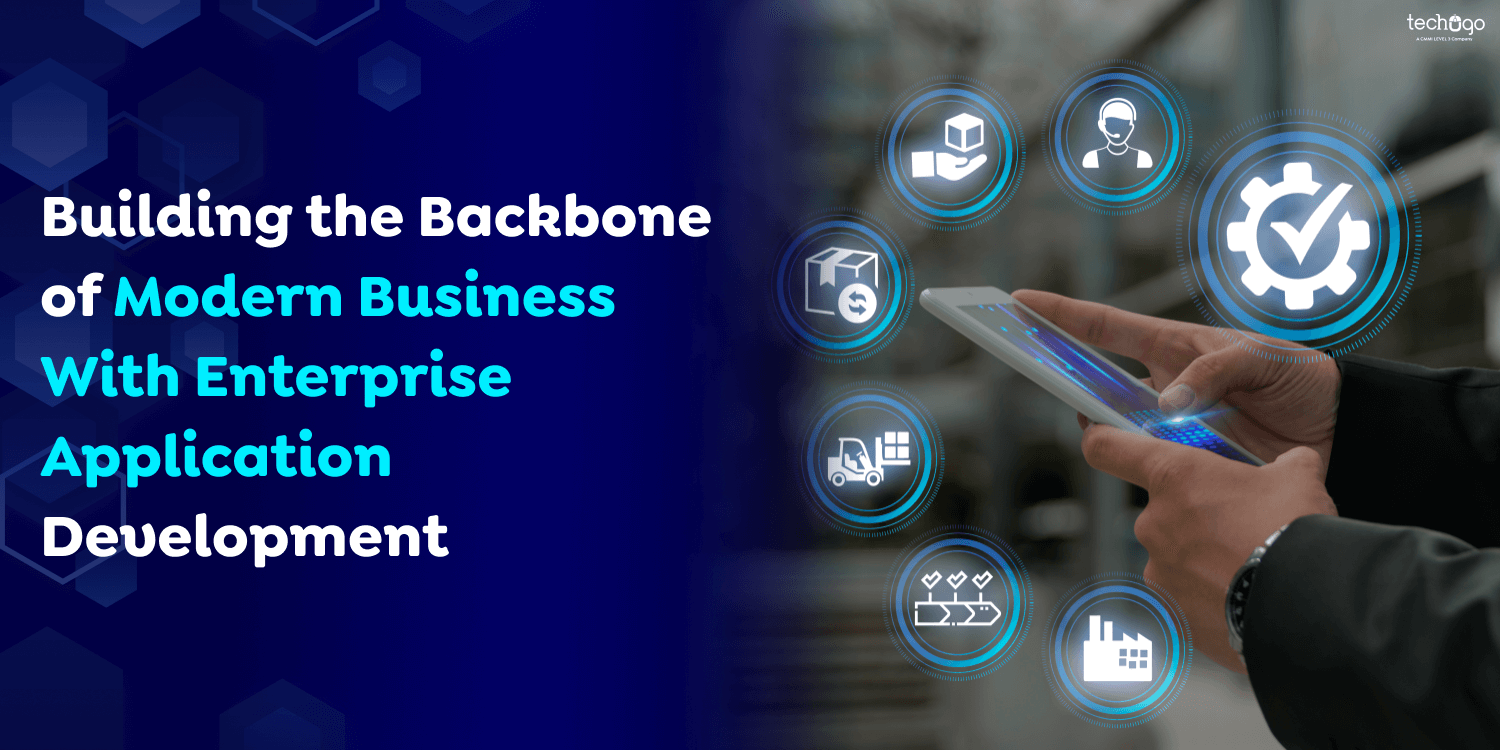
At times, businesses only cared a little about efficiency or teamwork. As digitization steers digital technology, organizations can concentrate on efficiency and improve client and employee engagement. App development for enterprises has been necessary to meet the goals essential to reaching them. Enterprise application development is crucial for organizations to improve effectiveness, improve processes, and get employees involved in the age of technology. Based on recent research, more than 35% of businesses have a business app in place for interaction with all their stakeholders.
As companies enter the age of connected customers, enterprise application development provides immense benefits through live information streams that improve user experiences. For enterprise IT, which is responsible for building these applications, a different strategy is required to accommodate today’s demands.
When developing enterprise apps, teams must manage many requirements and goals while managing expectations from multiple parties. This is why more than 50% of business applications fail due to insufficient planning and coordination. To succeed, enterprises must adopt the proper development procedure that provides the highest value to customers and their businesses. By utilizing the correct process backed by modern development practices, companies can create applications that build lasting connections between employees, customers, and partners. This will enable data-based decision-making and drive further expansion.
To help readers understand the concept and make it easier, we’ve created this detailed blog covering everything about enterprise app development.
Enterprise application development is the method of developing software programs specifically designed to satisfy the demands of big companies. These programs handle various business tasks, such as managing customer relationships, CRM and ERP, and supply chain management (SCM). Today’s highly competitive business world requires enterprise software development to play an essential role in boosting efficiency, fostering collaboration, and making better decisions.
The significance of enterprise-level application development is not overstated. Furthermore, technological advances continue to alter the course of application development for enterprises and innovation, with new trends. It includes cloud computing, artificial intelligence (AI), and mobile connectivity, revolutionizing how companies manage.
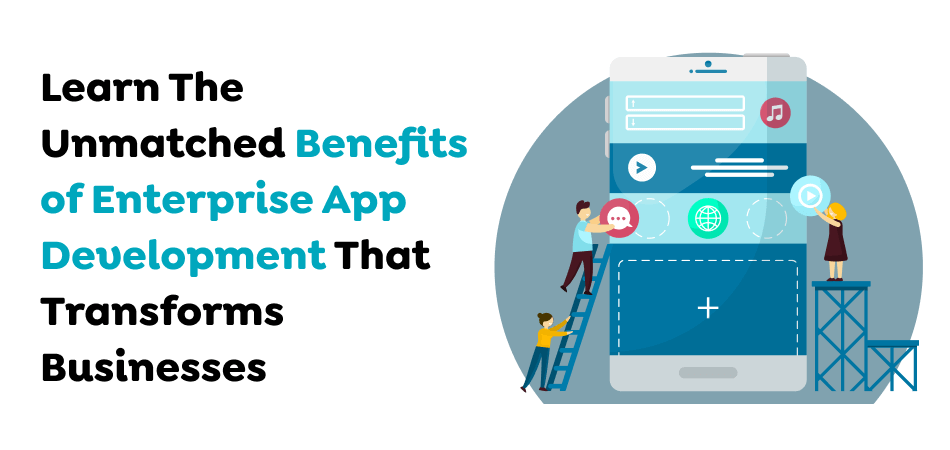
Enterprise apps are a boon to businesses in many ways. They also assist developers and mobile app development company in USA increase their clients’ revenue and business. So, whether you’re developing enterprise applications for your business or serving your clients from an agency or company, the app will benefit you in any case.
Learn more about the advantages by examining the following advantages:
Enterprise applications encompass a wide variety of functions for the business. These are the most common kinds of applications for enterprises:

CRM software helps organizations control customer interactions, monitor sales activity, and increase customer satisfaction. It typically has features like lead management, contact management forecasting for sales, and customer service management.
ERP applications integrate different departments and processes, including the human resource department, finance, inventory management, and supply chain management. The applications offer a central platform to manage and automate processes, increasing data efficiency and accuracy.
SCM applications are focused on maximizing the flow of products, services, and data throughout the supply chain. They assist companies in managing their product inventory, monitoring deliveries, and streamlining procurement processes. They also cooperate with suppliers and other partners.
HRM software facilitates employee data management, payroll and benefits administration, performance evaluation, and recruiting. It can automate HR processes, increase employee engagement, and ensure employees comply with laws and regulations.
Applications for business intelligence allow businesses to analyze, collect, and display data to gather insights and make better decisions. The applications typically have data integration, visualization, reporting, and predictive analytics features.
Collaboration tools, such as document-sharing platforms and tools for team communication, enable seamless collaboration and communication between organizations. They encourage teamwork, increase efficiency, and boost communication among employees.
Enterprise CMS development helps companies manage and publish content on digital platforms, including blogs, websites, and intranets. They are available to create content, edit versions, control versions, and publish. Content management system tools allow for efficient content management and distribution.
Mobile app development company incorporates many options to support application operations when creating enterprise-level applications. These essential functions in enterprise apps have been designed to cater to the different needs of companies. The most prominent functions are typically included in apps for enterprise:
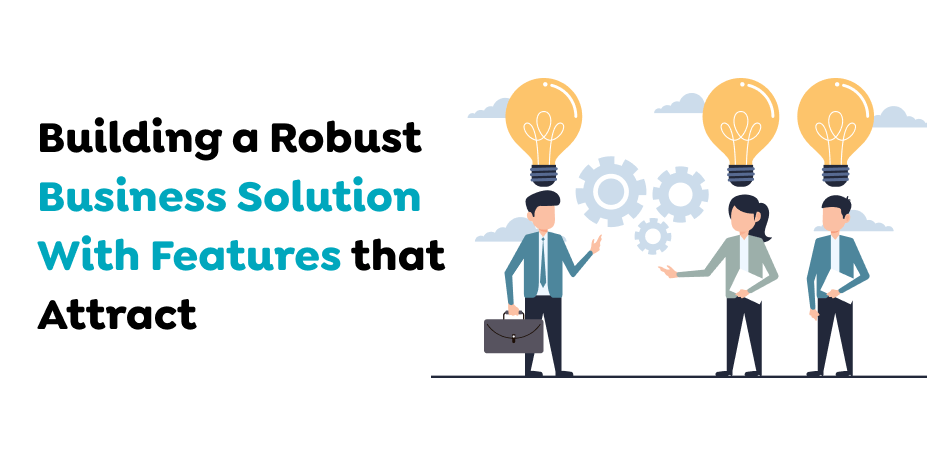
Most user authentication methods include passwords and usernames, biometric authentication, multi-factor authentication (requiring further verification options such as OTP security tokens or codes), and one-sign-on (SSO) connections with identity service providers.
When login is required, the user must present valid credentials or verify them using biometrics or other means. These can be verified against existing information about the user or other identity providers. This prevents unauthorized access, data breaches, and fraud.
Offline data synchronization allows users to update, access, or interact with application data even when disconnected or without a good internet connection. Team members or users can work without delays or buffering, regardless of location or status on the network.
When users disconnect in the first instance, applications store important information locally on the device. Data enters sync mode if the device is connected to the internet locally. This is where any modifications made offline will be reflected on the system, and any other updates made by users will be downloaded.
This app lets organizations control access to sensitive data capabilities, features, and other information inside the application. Administrators can determine which individuals or teams can access specific features based on permissions and roles. Additionally, they can define the roles with access rights and ensure the security of their systems and compliance.
Enterprise applications typically have functions to facilitate messaging, collaboration on project reports, document-sharing tools, real-time document editing, and more. These applications facilitate teamwork, communication, and exchange among employees regardless of location or time zone.
AI and ML can be integrated into algorithms in your app to analyze data, detect patterns, and formulate forecasts or suggestions. This helps businesses discover insights about future trends, customer behavior, and opportunities for business growth.
It streamlines repetitive task workflows and process management, thus reducing manual work and errors. Enterprise app developers must incorporate tools to automate work and improve decision-making speed while maintaining consistency across all processes.
It allows users to communicate with the app via spoken commands or NLP inquiries. It enables app users to perform specific jobs, get information, and reduce time spent by using the app using their voice. NLP can also answer common questions automatically, saving manual work.
The ability to work across different platforms, such as iOS, Android, etc. It is essential for the development of every application. Therefore, it is crucial to consider this aspect during application development because it allows users to connect to critical operations, regardless of the device they use.
Enterprise-level applications should comply with standards, regulations, industry norms, and internal privacy, security, and governance policies. Developers must implement every security measure and utilize multi-factor and two-factor authentication.
Reporting and analytics features offer valuable insights into performance patterns, trends, and possibilities. Advanced analytics capabilities, like predictive analytics, data visualization, and real-time reports, empower decision-makers to make educated choices and guide strategic decisions.
Mobile enterprise application development includes several steps and actions that aim to create software applications to meet the needs of specific businesses and organizations. This is a brief outline of the common steps involved:
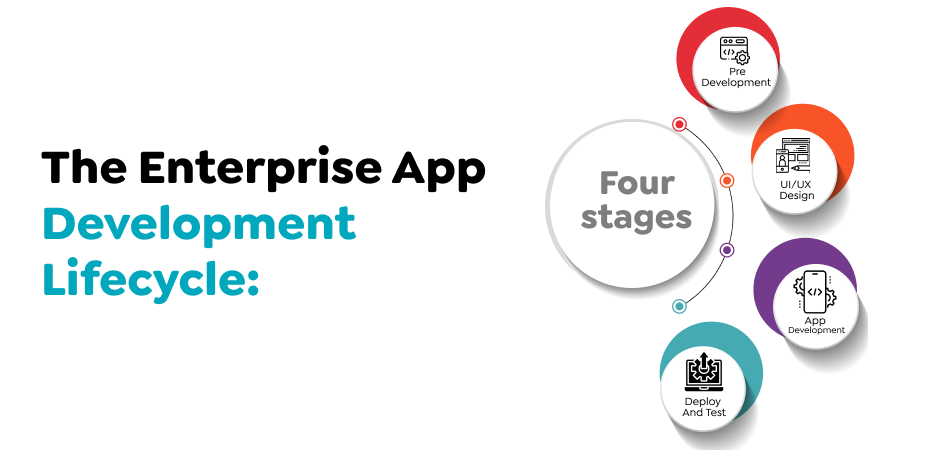
This is the defining portion of the process, which determines how the application development processes will achieve the desired results and advance to subsequent phases. To begin the process, the team is responsible for identifying, gathering, analyzing, and evaluating functional and non-functional requirements so that they can comprehend the requirements of the users and the business.
Enterprise app developers assess the financial, technical, and operational elements to determine whether the plan is achievable in time and budget. They also consider the budget. Experts then evaluate the latest technology, frameworks, platforms, and tools employed in development. They also consider crucial aspects such as scalability, compatibility, and the best methods.
They then create an elaborate plan for the project, detailing the timeframe and milestones, the tasks dependent on them, risk-related risks and budget, Proof of Concept, and the project’s responsibility. The plan serves as a road map for the development process and assists in monitoring progress over the project’s life.
The creation of a user interface or the design of user experiences typically requires several processes. Designers evaluate their competitors and conduct user research to learn about users, their preferences, pain points, and general behavior. Based on the data gained from user research, user personas are developed to portray the users interacting with the app. They outline use scenarios that outline specific functions and processes that users are expected to be able to perform in the software.
Designers organize the application’s information and functionality efficiently and easily to create IA. They make navigation pathways, menus, content, and navigation hierarchies to assist users in moving through the application and locating what they’re looking for. In the next step, low-fidelity representations of the UI design and functions are designed. Designers create app components, including menus, buttons, and content blocks, but without including visual design elements.
Designers develop interactive, high-quality visualizations of the UI design that allow easy visualization of the application’s function, flow, and interaction before the development process starts. The visual design phase is focused on UI aesthetics. This includes the color scheme and typography, as well as icons as well as graphics and elements. Designers design a visually attractive user interface that aligns with the brand’s identity and gives the user an unforgettable experience.
Interaction design defines how users interact with an app’s interface and perform tasks. Its primary responsibilities include creating accessible navigation, animated motions, feedback mechanisms, and micro-interactions to help users navigate to the interface. Usability app testing includes analyzing an application’s design using real-world users to find problems with usability and collect feedback to improve. Designers evaluate the navigation of their applications, the task completion process, and usability tests to refine the design and produce more efficient results.
This is the step in which an enterprise application development company develops an application that meets the requirements and specifications outlined during the initial process. The procedure involves writing code and feature implementation, integrating components, etc. When developing enterprise-level applications, developers set up the development environment they need, including IDEs, version control systems, database servers, and various other instruments required for testing and coding. Enterprise mobile app developers incorporate their architectural choices into the development process and create software structures, architectures, data flow, integrations, and elements.
The developers break the application into modules based on their functions and then write code for these modules using coding guidelines and suitable methods. Experts develop the logic for server-side and database integration and APIs the application requires. They create code in Java, Python, C#, and more. They use Javascript runtimes such as Node.js and interact with databases like MySQL, PostgreSQL, MongoDB, and Redis.
Front-end developers develop user interfaces (UI) and create user-friendly, interactive components and client-side functions with web technologies like Flutter, HTML, CSS, and JavaScript frameworks like React.js, Angular, or Vue.js. Middleware elements, like messaging systems, cache mechanisms, and integrations with third-party providers, were designed to facilitate communication between various parts of the app and other external platforms.
When your app is finished, you can thoroughly test it and apply the finishing details before deploying. The next step is to publish the app in the appropriate app stores (Google Play Store and Apple App Store) and optimize the listing. After the app launch, it will be possible to advertise the app. But, if you’re making this promotion a business for yourself rather than for your clients, it is essential to emphasize customer requirements and their feedback throughout every phase of the process.
Make a dashboard and then share your app with them. During this phase, you can also invite users to try out and review your app so that you can avoid mistakes in post-production. Be aware of new trends and requirements and include them in your designs as needed.
The cost of creating enterprise software can vary greatly depending on the size, complexity, and particular needs involved. Here are a few general guidelines regarding the cost of development:
Apps that are relatively basic and have limitations in functionality, integrations, and user base could cost approximately $50,000 to $150,000.
Applications that require moderately complicated features and high usage, with more excellent features and security requirements, may cost anywhere from $150,000 to $500,000
It could cost up to $500,000 or more for a massive system that spans the entire enterprise, with ample customization, complex connections, Big Data capabilities, requirements for scalability, and rigorous tests.
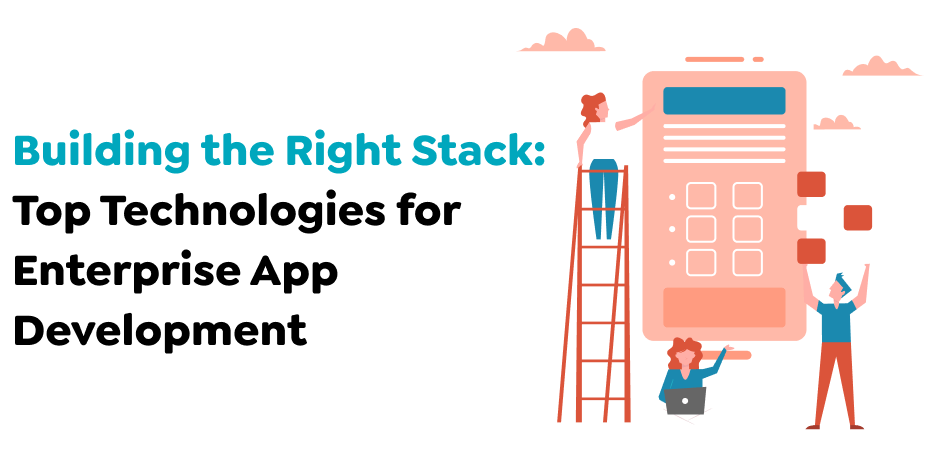
The stack of technology used for business application development usually depends upon the demands and needs of a business. But below is a list of common frameworks and technologies:
Java, C#Python, and JavaScript are popular for building enterprise-level applications. A language is selected based on its performance, compatibility, and the skills of the development team.
Enterprise application development often uses platforms and frameworks that offer strong libraries and tools. In particular, Java-based apps could use frameworks like Spring, Hibernate, and JavaServer Faces (JSF). In the same way, .NET applications can use the .NET framework and ASP.NET.
Relational databases like Oracle, MySQL, and Microsoft SQL Server are commonly utilized in enterprises’ applications. NoSQL databases such as MongoDB or Cassandra are also becoming popular for handling vast amounts of unstructured data.
Web-based applications for enterprise use technology that includes HTML, CSS, and JavaScript frameworks such as React, Angular, or Vue.js for creating interactive user interfaces.
Cloud-based services like Amazon Web Services (AWS), Microsoft Azure, and Google Cloud Platform (GCP) can provide flexible infrastructure and services for hosting enterprise applications. Cloud-based technologies facilitate easier installation, scaling, and cost reduction.
Middleware and integration frameworks such as Apache Kafka, Apache Camel, and MuleSoft allow seamless integration with different systems, databases, and APIs.
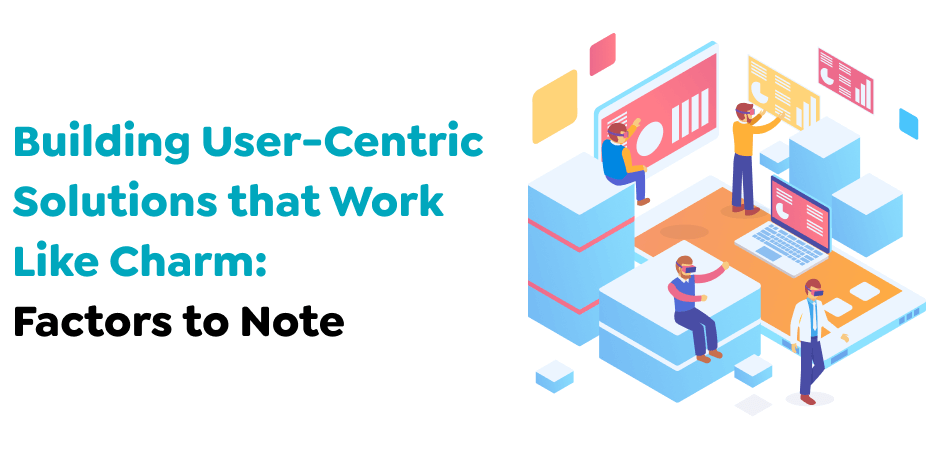
Whatever enterprise app you select, there are some important aspects to be aware of. It is crucial to concentrate on user-friendliness and simplicity while developing mobile applications. We must understand the essential things to consider when developing enterprise-level apps.
Recognize stakeholders: It’s crucial to determine all the stakeholders and users affected by the mobile application. This helps ensure that the needs of all parties are considered in design.
Setting specific, attainable, quantifiable, and realistic goals for your mobile app project is essential. Setting clear goals can enable the entire team to focus on achieving them.
After you know what needs to be accomplished, you should decide how much time and money will be required to ensure its successful conclusion. This will help you reduce time and cost throughout the development process.
A UI/UX strategy should be designed with your users’ needs at the forefront. The strategy should consider how users interact with the application, what features they require, and what information they would like to have easily and quickly.
Selecting the best design is crucial to creating an app for mobile business. You also need a strong user interface and a user experience plan that will provide a satisfying user experience.
Mobile device design is distinct from designing desktop or web applications, as many of the common interactions differ. To ensure that your application is comfortable for users, it’s important to know how interaction works in mobile apps and create the app accordingly.
A second important aspect to consider in developing mobile applications for enterprises is their ability to scale and change. It must be capable of scaling up and down based on the number of users and quickly adapting to different devices and platforms.
It is important to ensure your chosen design is simple and easy to use. An effective application must be user-friendly, using simple options and menus that allow users to discover the information they’re looking for quickly and efficiently.
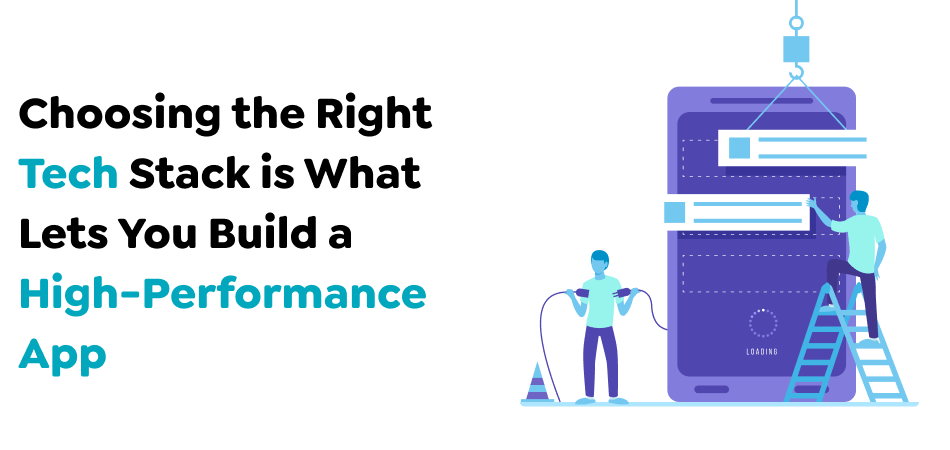
When designing your app for mobile use in the enterprise, you must know the stack of technologies before you begin developing your mobile app. It combines languages, tools, and frameworks utilized in the development process. Suppose you wish for your app to be efficient and speedy. In that case, selecting a technology stack that will allow you to achieve this is important. Below are a few things to think about to consider when choosing your tech stack.
Choose technologies and frameworks that offer high-performance features to ensure your application runs smoothly and effectively. Performance is crucial in enterprise mobile applications. You don’t wish to have a slow app or a slow response.
It is essential to find an application that can rapidly expand or reduce its capacity depending on the needs. Find a tech stack with scalability to handle any increase or decrease in user demand easily.
Security must be the first concern for every enterprise mobile app. Pick a technology stack with built-in solid security capabilities, including encryption protocols, authentication, and data security features. Private cloud services should also be considered for further security measures.
The process of developing enterprise applications is challenging. Startups face increasing difficulty in sourcing funds for their business software. Even well-established conglomerates hesitate to approve business application development because of many issues. They include:
Organizations must satisfy the diverse requirements of numerous stakeholder groups. The most important issue is that they need to remain flexible. Thus, businesses cannot use an established plan that demands change. This can cause problems such as conflicts of interest and less cooperation among staff in different departments.
The applications should be integrated across departments and environments. Although employees in a specific department find the application easy to use, others prefer a more traditional or traditional method. Ultimately, seamless data integration and synchronization could be a significant issue.
When an organization’s size increases, the volume of information stored increases dramatically. Therefore, it is challenging to organize relevant data. Additionally, retrieving information becomes difficult because much of the data is unstructured. Although cloud hosting could solve the problem efficiently, businesses have to invest more money to secure storage.
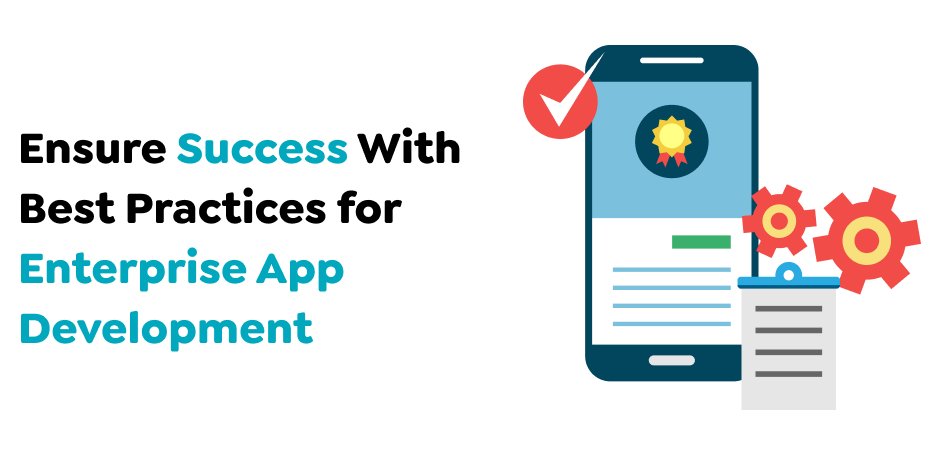
The development of enterprise-level applications is an arduous process. However, it doesn’t have to be. There are ideal practices to remember while developing enterprise apps that guarantee success and smooth operation. The challenges of mobile app development for enterprise development can be averted by applying these methods.
The primary requirement is that the quality of the code in the application you write be superior to that of a typical customer-facing application. It must also be durable, built to scale, and able to process large volumes of information. You should also know any codes based on industry standards or protocols.
The user experience for the enterprise application must be easy and simplified to facilitate user-friendliness. The user interface should appear simple and logical, making user navigation a breeze and allowing them to complete their jobs quickly. Furthermore, the program must have options such as individual roles and access rights, which allow you to set access levels for each user.
Data security is a must in enterprise application development. Security-based authentication techniques like Multi-Factor Authentication (MFA) are crucial to stop unauthorized access to data or its misuse in the system. Furthermore, regularly scheduled backups ensure the security of data from outside dangers.
Be sure to pay attention to the application’s Unique Selling Propositions (USPs) regardless of whether it’s a company’s internal app. Incorporate distinctive features or capabilities within your enterprise app to make your employees more visible.

Modern technology has led to new ideas about corporate ownership and business expansion. This new paradigm can improve business outcomes by speeding up processes, enhancing transparency, and introducing greater flexibility.
90% of all new business applications will include AI and ML in 2024. These reasons should not be surprising. The latest technologies drive higher conversions and maximize potential growth opportunities. Since Machine Learning and AI technologies are flexible and adaptable, they could help your business grow by offering enhanced services to customers.
Automation is at the heart of all business apps, as it simplifies the entire business procedure by utilizing a single platform. A well-designed enterprise application can automate and manage tedious tasks, reduce user steps, and finish workflows with guaranteed performance and efficiency.
Blockchain technology has become synonymous with security and protection for companies drowning in unprotected information. It’s an efficient method of building trust between various entities, accelerating transactions, and cutting down on expenses for financial transactions. In the end, the blockchain market will generate a profit of around $20 billion in 2024.
Industrial 4.0, also known as industrial IoT, could accelerate hyper-automation via the interconnectedness of physical objects that communicate and connect data to various devices. Incorporating IoT solutions into your business application can help you monitor your company’s activities within a safe, structured setting, collect practical information, and streamline your entire infrastructure for the future.
We’re all conscious of the importance of big data and how it is changing people’s lives with a personalized customer experience. The technology is aiding businesses by providing reliable and speedier business interactions. Therefore, big information is the right way to move if you’re looking to provide exceptional customer service and faster assistance for less cost.
Now you have the information about enterprise app development. They do not just streamline processes; they can also help in making decisions, increase efficiency, improve productivity, and increase customer satisfaction. Developing an enterprise app is a vital part of your company’s puzzle that will guide it to successful growth and success. You must understand all the essential points before creating an enterprise application.
Developing enterprise business applications can seem complex; however, you can accomplish it with the proper skills and well-planned strategies. Whether you’re a developer, a business owner, or a project manager, be aware that it is crucial to concentrate on your customers’ needs, find innovative strategies, and establish a basis on which to base the application. If you are patient and make an effort, you can create an Enterprise application to help every business succeed.
At Techugo, we possess a deep understanding of the complexities involved in enterprise app development. Our team of seasoned experts excels in crafting tailored solutions that align with your business objectives. With a focus on innovation and user experience, we deliver enterprise apps that empower your workforce and drive tangible results.
Let us be your partner in transforming your business through technology. Contact us today to discuss your enterprise app vision.
Write Us
sales@techugo.comOr fill this form